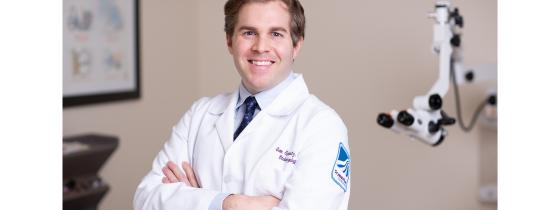
An In-Depth Look at Sinus Infections and When to See an Otolaryngologist
How often do you think about your sinuses? Chances are, you’re only thinking about your sinuses when you have a problem with them. Sinus infection, also called sinusitis is a common condition that plagues about 31 million people each year in the U.S. Learn more about sinuses and how to recognize a sinus infection before you search for an “ear, nose, and throat specialist near me.”
What are the paranasal sinuses, what function do they serve and how do they get infected?
The paranasal sinuses, commonly referred to as just sinuses, are a group of intricately designed air cells that are located within our head. We are born with small paranasal sinuses and they slowly grow as we age. The sinuses reach mature size by early adulthood in the majority of people. There are normally 8 sinuses within our head – we have 2 maxillary sinuses behind the cheeks, 4 sets of ethmoid sinuses (2 anterior and 2 posterior) in between the eyes, 2 sets of frontal sinuses above our eyebrows, and 2 sets of sphenoid sinuses in the back of our nose.
Our sinuses are normally meant to be filled with air, however when they become blocked, they fill with fluid and can become infected. The sinuses serve several functions, including making our heavy head lighter, and helping humidify, clean, and warm the air we breathe through our nose.
What are the symptoms of a sinus infection?
Symptoms of a sinus infection may include nasal congestion, facial pain and pressure, fevers/chills, drainage from the nose both clear and color, eye pain and pressure, and postnasal drip. A majority of patients that have a sinus infection do not require antibiotics, as most sinus infections are due to upper respiratory viral illnesses. In these cases, patients should resort to nasal decongestants, and sinus irrigation solutions (like Neilmed sinus rinse) to help curtail the infection. If symptoms persist for greater than 7-10 days, or if symptoms improve initially and then begin to worsen, antibiotics should be used to treat the sinus infection as these are signs of a bacterial sinus infection.
When do you need to see an Otolaryngologist for sinus care?
Otolaryngologists (also known as Ear, Nose and Throat doctors) are uniquely trained to examine and manage all kinds of sinus disease. When patients have chronic sinus symptoms for longer than 3 months, sinus symptoms that persist despite antibiotics, or recurrent sinus infections, they should be evaluated by an Otolaryngologist. Otolaryngologists use state-of-the-art equipment including cameras to uniquely examine the nasal cavity and drainage pathways of the sinuses. In doing so, Otolaryngologists can identify all types of sinus disease, and make recommendations which may include a CAT scan of sinuses, endoscopic sinus surgery, antibiotics, sinus irrigations, or a unique combination of prescription nasal sprays depending on the diagnosis.
If these symptoms sound like something you’ve experienced or if you’re plagued by constant sinus issues, it’s time to make an appointment with an Otolaryngologist. An examination by an ear, nose, and throat specialist near you can help get you back to health. Visit our website to learn more and book an appointment today!
Sam Spinowitz, MD, is an Otolaryngology- Head and Neck Surgery Specialist who earned his Medical Degree from University of Rochester School of Medicine in Rochester, NY and completed his Residency in Otolaryngology-Head and Neck Surgery at Albert Einstein College of Medicine - Montefiore Medical Center in New York, NY. His clinical interests include general otolaryngology, pediatric otolaryngology, sinus surgery, hearing and speech disorders, and thyroid and parathyroid disorders. Dr. Spinowitz is providing care to patients in Monroe and West Nyack.
Source:
https://acaai.org/allergies/allergic-conditions/sinus-infection/

 Optum Radiology at Crystal Run Healthcare
Optum Radiology at Crystal Run Healthcare Request medical records online
Request medical records online